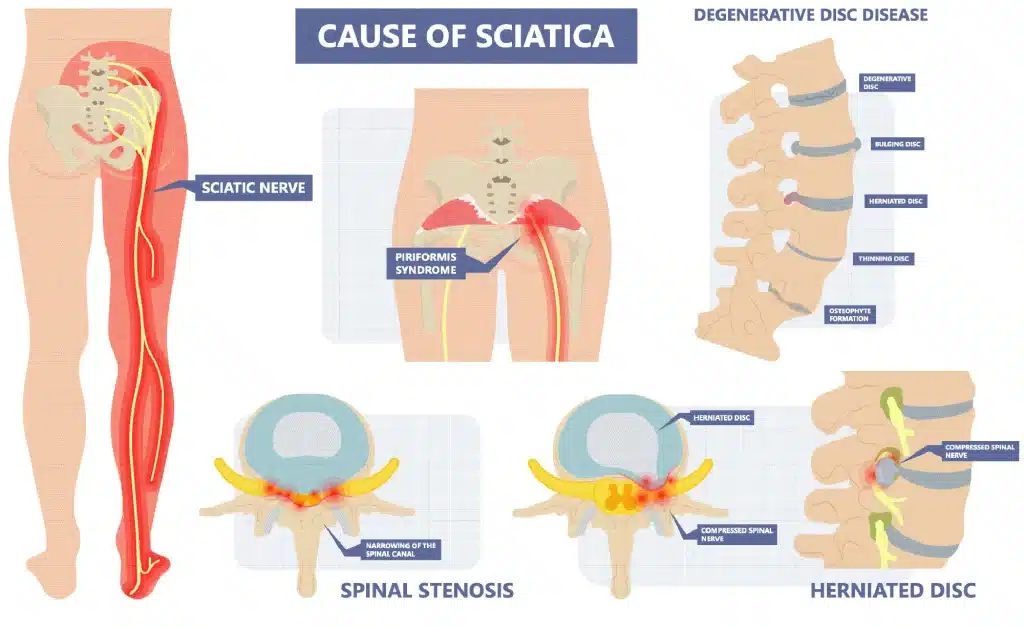Sciatica is a common condition that affects many people worldwide. It is characterized by pain, numbness, or tingling sensation that radiates from the lower back down to the leg, following the path of the sciatic nerve. This discomfort often arises when this nerve is pinched or irritated. If you’re grappling with this condition, you might be wondering, “how do I unpinch a sciatic nerve?” This article aims to uncover the mystery of sciatica and provide you with practical solutions to alleviate your discomfort.
Understanding Sciatica
Before we delve into how to unpinch a sciatic nerve, it’s crucial to understand what sciatica entails. The sciatic nerve is the longest and widest nerve in the human body, extending from the lower back down each leg’s backside. When any part of this nerve is compressed or pinched (often by a herniated disc or bone spur), it can lead to inflammation, pain and often some numbness in the affected leg.
Symptoms of sciatica can vary in intensity and frequency but commonly include lower back pain that extends through the hip and buttock down one leg, hip pain, burning or tingling sensation down the leg, weakness or numbness in difficulty moving the leg or foot.
Non-Surgical Ways to Unpinch a Sciatic Nerve
1. Physical Therapy: Physical or sports therapy plays a significant role in managing sciatica symptoms. A physical or sports therapist can guide you through exercises that strengthen your back muscles, glide the sciatic nerve and improve your posture. Joint mobilisations of the spine along with Transcutaneous electrical nerve stimulation (TENS) can also help ease pain and reduce pressure on your lower back.
2. Massage Therapy: Massage can help relieve muscle tension that contributes to sciatic nerve pain. It can also improve blood circulation, promoting healing and reducing inflammation.
3. Medications: Over-the-counter pain relievers, anti-inflammatory drugs, muscle relaxants or antidepressants may be recommended by your doctor to manage pain and inflammation.
4. Steroid Injections: If the pain is severe, your doctor might suggest a corticosteroid injection into the area around the pinched nerve to reduce inflammation and ease pain.
5. Surgery: Surgery is usually considered as a last resort when conservative treatments fail or if you have severe symptoms such as significant weakness or loss of bowel or bladder control.
Preventing Sciatica
Prevention is always better than cure! Incorporating certain habits into your lifestyle can help prevent sciatica or stop it from recurring:
1. Regular Exercise: Regular physical activity can keep your back strong and reduce the risk of developing sciatica.
2. Proper Posture: Maintaining good posture while sitting and standing can help protect your back.
3. Healthy Diet: A balanced diet that includes plenty of fruits, vegetables, lean proteins, and whole grains can help maintain a healthy weight, reducing pressure on the spine.
4. Adequate Rest: Ensure you get enough sleep each night as it allows your body time to rest and repair itself.
Conclusion
Uncovering the mystery of sciatica involves understanding its causes, symptoms, and treatment options. While it can be a painful condition, there are several ways to unpinch a sciatic nerve and alleviate discomfort. We regularly see people in clinic presenting with symptoms associated with Sciatica. Depending on individual need, cause and severity of symptoms, treatments like hot/cold therapy, electrical stimulation, massage, and joint mobilisation can help calm down a Sciatica flare up.
Exercises appropriate to the stage of healing that involve strengthening and stretching are also important for improving flexibility, spinal posture and pain reduction. If you suspect you are suffering with Sciatica, or know someone that is, feel free to get in touch, or book in with Stuart at Sports Therapy One Kenilworth for a full injury assessment.

